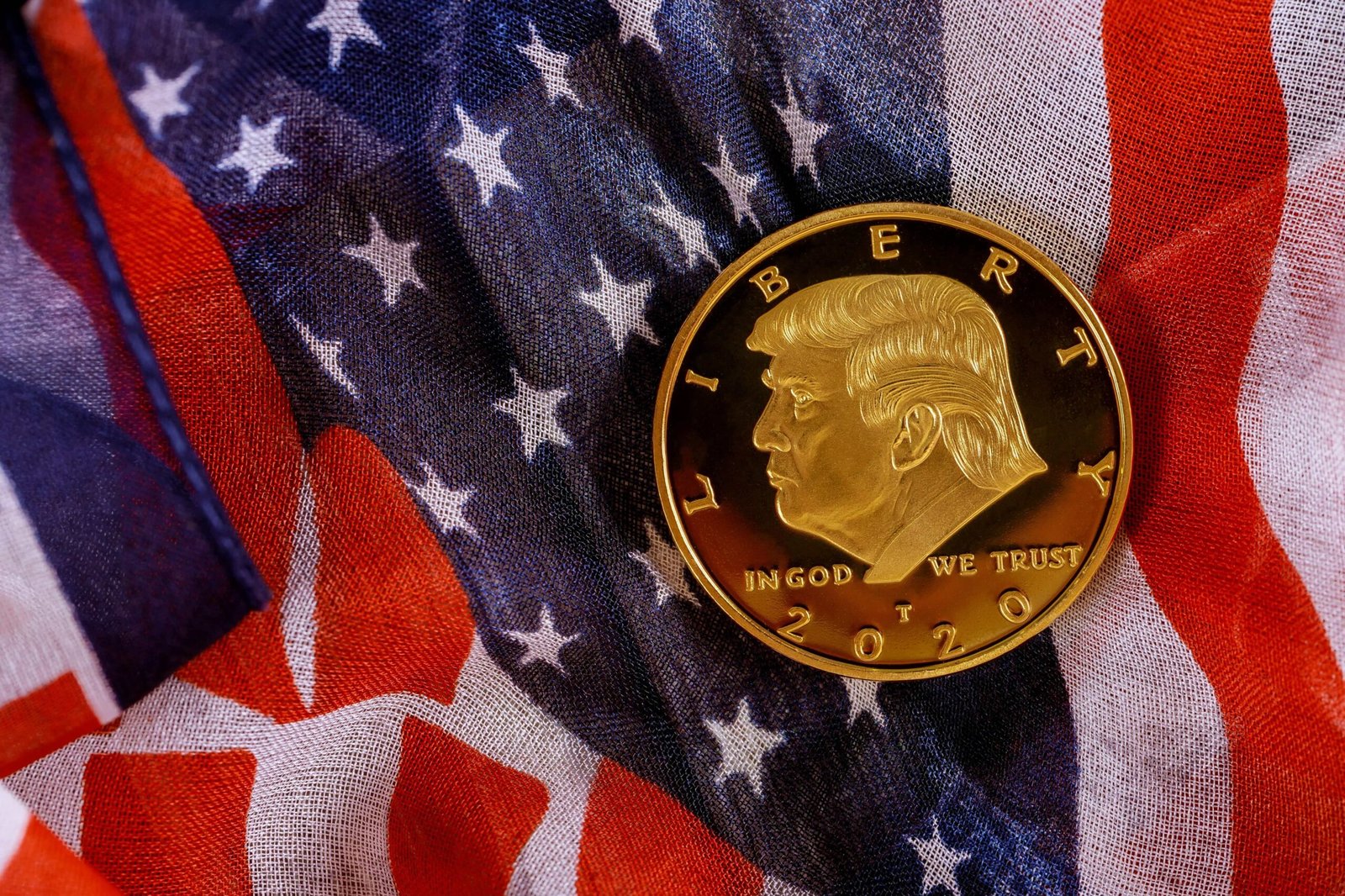Introduction
The financial landscape is witnessing unprecedented shifts, with digital currencies and blockchain technology redefining global commerce and trade. Former President Donald Trump has emerged as a notable figure championing investments in the digital and cryptocurrency sectors. With reports of a $500 billion investment initiative aimed at bolstering these industries, Trump’s involvement is sparking discussions worldwide. This article delves into the details of this massive investment, its implications for the digital economy, and how it aligns with Trump’s broader vision.

Understanding Trump’s $500 Billion Initiative
Former President Donald Trump has announced an ambitious $500 billion investment plan targeting the digital and cryptocurrency sector. This initiative aims to position the United States as a global leader in blockchain technology, cryptocurrency innovation, and digital financial systems. The move reflects a significant shift in Trump’s stance on cryptocurrency, marking a new chapter in U.S. economic policy.
Key Highlights of the Plan
- Massive Investment: $500 billion allocated across blockchain, crypto, and digital infrastructure.
- Public-Private Partnerships: Collaboration between government and private entities to accelerate innovation.
- Focus on Regulation: Establishing a comprehensive framework to support growth and ensure security.
Objectives and Scope of the Investment
The initiative is designed to achieve the following:
- Promote Blockchain Innovation: Encourage the development of blockchain applications beyond cryptocurrency.
- Boost Financial Inclusion: Enable broader access to financial tools for underserved populations.
- Create Jobs: Drive job growth in the tech and financial sectors.
- Enhance U.S. Competitiveness: Position the country as a leader in the global digital economy.
The Current State of the Cryptocurrency Market
Growth Trends in 2023
The cryptocurrency market has seen exponential growth in 2023, with key trends including:
- Increased adoption of Bitcoin and Ethereum.
- Surge in decentralized finance (DeFi) platforms.
- Growing interest in stablecoins as alternatives to traditional currency.
Major Players Driving the Market
Leading entities like Coinbase, Binance, and institutional investors have played a pivotal role in driving market expansion. Simultaneously, governments worldwide have begun exploring Central Bank Digital Currencies (CBDCs).
Why Digital and Crypto?
The Role of Blockchain in Economic Transformation
Blockchain technology underpins cryptocurrencies and offers revolutionary applications in supply chain management, healthcare, and finance. Its potential for transparency and efficiency makes it a cornerstone of economic transformation.
Advantages of Cryptocurrency Adoption
- Decentralization: Reduces reliance on centralized banking systems.
- Cost Efficiency: Lowers transaction fees for businesses and consumers.
- Accessibility: Provides financial tools to unbanked populations.
Trump’s Relationship with Cryptocurrency
Past Comments and Policy Actions
Initially, Trump expressed skepticism about cryptocurrencies, labeling them as “not real money” and questioning their reliability. However, his administration took steps to explore blockchain technology in government operations.
Shift in Perspective: What Changed?
The growing influence of the digital economy and global adoption of cryptocurrencies appear to have influenced Trump’s revised stance. Recognizing the potential for economic growth and innovation, this plan underscores a strategic pivot.
The Breakdown of the $500 Billion Investment
Focus Areas: Blockchain, Crypto, and Infrastructure
The initiative targets three primary areas:
- Blockchain Infrastructure: Developing scalable and secure blockchain platforms.
- Cryptocurrency Ecosystems: Supporting startups and existing companies in the crypto space.
- Digital Infrastructure: Building data centers, improving cybersecurity, and enhancing digital payment systems.
Public-Private Partnerships
Collaborations with tech giants, financial institutions, and startups will be key to the plan’s success. Incentives for private investors are expected to accelerate the pace of innovation.
Potential Economic Impacts
Job Creation in Tech Sectors
The investment is projected to create thousands of jobs in blockchain development, data analysis, and cybersecurity.
Boost to Financial Inclusion
By expanding access to digital financial tools, the plan aims to bridge economic disparities, particularly in underserved communities.
Critics and Challenges
Concerns About Market Volatility
Critics argue that the inherent volatility of cryptocurrencies poses significant risks to investors and the broader economy.
Regulatory and Security Issues
The lack of a global regulatory framework for cryptocurrencies and concerns over cybersecurity threats remain significant challenges.
Global Reactions to the Announcement
Responses from Key Nations
Countries like China and the EU have taken note of the U.S. initiative. While China continues to dominate the blockchain space, the EU has accelerated its regulatory framework for digital assets.
How This Investment Affects Global Crypto Markets
The announcement is expected to bolster investor confidence, driving further growth in global cryptocurrency markets.
The Role of U.S. Regulation in Cryptocurrency
Current Legal Frameworks
The U.S. currently operates under a patchwork of state and federal regulations, creating uncertainty for businesses and investors. This initiative aims to standardize and clarify the regulatory environment.
Trump’s Advocacy for Pro-Growth Policies
By promoting a balanced approach to regulation, the plan seeks to encourage innovation while addressing security and compliance concerns.
Innovation and Blockchain Startups
Fostering a Culture of Innovation
The investment includes funding for research and development, aiming to cultivate a thriving ecosystem of blockchain startups.
Success Stories to Watch
Companies pioneering decentralized finance, NFT marketplaces, and supply chain solutions are positioned to benefit significantly.
Digital Currency Adoption in the U.S.
Trends in Public and Private Sector Use
Both sectors have increasingly adopted digital currencies for efficiency and transparency. Examples include PayPal’s crypto offerings and government blockchain pilots.
Central Bank Digital Currencies (CBDCs)
The Federal Reserve’s exploration of a digital dollar aligns with the broader objectives of this initiative.
Investor Insights and Market Opportunities
Key Industries Positioned for Growth
Industries such as fintech, gaming, and supply chain logistics are poised to benefit from increased blockchain adoption.
Advice for Potential Investors
Investors are encouraged to focus on long-term opportunities in infrastructure and utility-driven cryptocurrencies.
The Role of Education and Skill Development
Addressing the Talent Gap
A significant portion of the investment will go toward upskilling workers and developing educational programs in blockchain and crypto technologies.
Initiatives for Workforce Readiness
Collaboration with universities and training institutes will ensure a steady pipeline of skilled professionals.
Sustainability and Green Blockchain Technology
Balancing Innovation with Environmental Responsibility
To address environmental concerns, the initiative includes funding for research into green blockchain technologies and energy-efficient mining practices.
Conclusion: Trump’s Legacy in Digital Finance
A Look Ahead: What to Expect in the Coming Decade
Trump’s $500 billion initiative could redefine the global digital economy, solidifying the U.S.’s position as a leader in cryptocurrency and blockchain innovation. While challenges remain, the plan’s potential for economic growth and technological advancement is undeniable.




